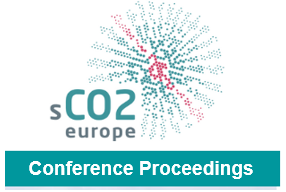Modeling of Autonomous Brayton Cycle Loop with GAMMA+ code for Micro Modular Reactor Simulation Application
The Supercritical carbon dioxide (S-CO2) cycle is considered as a promising power conversion system for numerous power applications, because it has relatively high thermal efficiency and compact component size. This paper shows the validation of GAMMA+ code, which was originally developed by Korea Atomic Energy Research Institute to analyze the gas-cooled reactors, by comparing the experimental data obtained from Autonomous Brayton Cycle (ABC) loop constructed in Korea Advanced Institute of Science and Technology (KAIST) and calculation result from the code. ABC loop is a simple recuperated closed S-CO2 Brayton cycle constructed by the KAIST research team. ABC loop consists of a turbine-alternator-compressor (TAC), electric heater, recuperator, precooler and control valves. Previously, GAMMA+ code was already validated with the experimental data obtained from SCO2PE and SCIEL facilities. In contrast to the ABC loop, only cooling and compression of the S-CO2 were tested. With ABC loop, not only cooling and compression of the S-CO2 were tested, but also the heating and recuperation were experimented. The ABC loop was modeled using GAMMA+ code and the calculation from the code is in accordance with the experimental data. Thus, GAMMA+ code can accurately simulate the S-CO2 system in the future, for example a Micro Modular Reactor (MMR) utilizing as S-CO2 power system.
Vorschau

Zitieren
Zitierform:
Choi, Sungwook/Lee, Jeong Ik (2023): Modeling of Autonomous Brayton Cycle Loop with GAMMA+ code for Micro Modular Reactor Simulation Application. In: 5th European sCO2 Conference for Energy Systems: March 14-16, 2023, Prague, Czech Republic. S. 186–193. Online unter: https://nbn-resolving.org/urn:nbn:de:hbz:465-20230427-133726-5.
Zitierform konnte nicht geladen werden.
Rechte
Nutzung und Vervielfältigung:
Dieses Werk kann unter einer Creative Commons Namensnennung 4.0 Lizenz (CC BY 4.0)
Creative Commons Namensnennung 4.0 Lizenz (CC BY 4.0)
genutzt werden.
